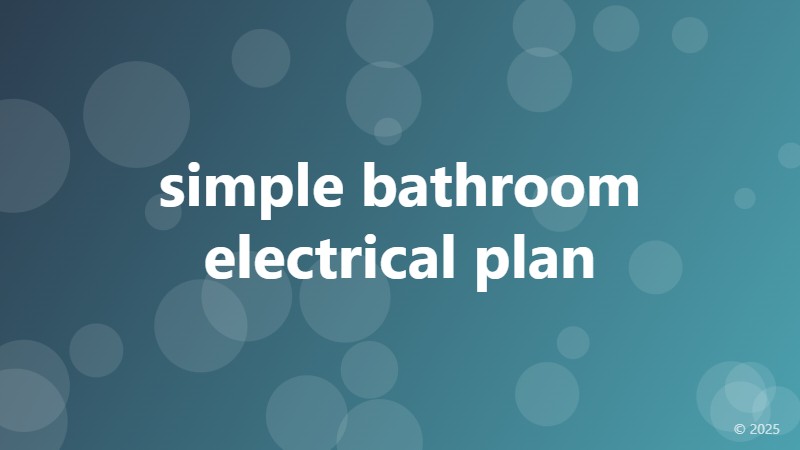simple bathroom electrical plan

Understanding the Basics of a Simple Bathroom Electrical Plan
A well-planned bathroom electrical system is crucial for safety, functionality, and aesthetics. A simple bathroom electrical plan can help you achieve a stress-free and enjoyable bathroom experience. In this article, we will delve into the essentials of a simple bathroom electrical plan, highlighting the key components, considerations, and best practices to ensure a successful installation.
Key Components of a Simple Bathroom Electrical Plan
A simple bathroom electrical plan typically consists of the following key components:
1. Lighting: A combination of task lighting, ambient lighting, and natural lighting is essential for a well-lit bathroom. Task lighting includes lights above the mirror, shower, and bathtub, while ambient lighting provides overall illumination. Natural lighting is achieved through windows, skylights, or solar tubes.
2. Power Outlets: Adequate power outlets are necessary for charging personal care devices, powering hair dryers, and connecting other bathroom appliances.
3. Heating and Ventilation: A simple bathroom electrical plan may include heated floors, towel warmers, or radiant ceiling panels for added comfort. Proper ventilation is also crucial to remove moisture and reduce the risk of mold and mildew.
Electrical Safety Considerations
Electrical safety is paramount in bathroom design. Here are some essential considerations to keep in mind:
1. Ground Fault Circuit Interrupters (GFCIs): GFCIs are mandatory in bathrooms to protect against electrical shock. These devices detect ground faults and interrupt the power supply to prevent accidents.
2. Water-Resistant Fixtures: All electrical fixtures in the bathroom should be water-resistant or waterproof to prevent electrical shock and ensure safety.
3. Separation of Electrical Components: Keep electrical components, such as outlets and switches, at a safe distance from water sources, like sinks and showers, to minimize the risk of electrical shock.
Best Practices for a Simple Bathroom Electrical Plan
To ensure a successful and safe bathroom electrical installation, follow these best practices:
1. Hire a Licensed Electrician: A licensed electrician can design and install a simple bathroom electrical plan that meets local building codes and safety standards.
2. Plan Ahead: Consider your bathroom's specific needs and plan the electrical layout accordingly. This will help you avoid costly rework and ensure a smooth installation process.
3. Use High-Quality Materials: Invest in high-quality electrical materials and fixtures that are designed for bathroom use to ensure durability and safety.
By understanding the basics of a simple bathroom electrical plan and following these guidelines, you can create a safe, functional, and comfortable bathroom that meets your needs and enhances your daily routine.